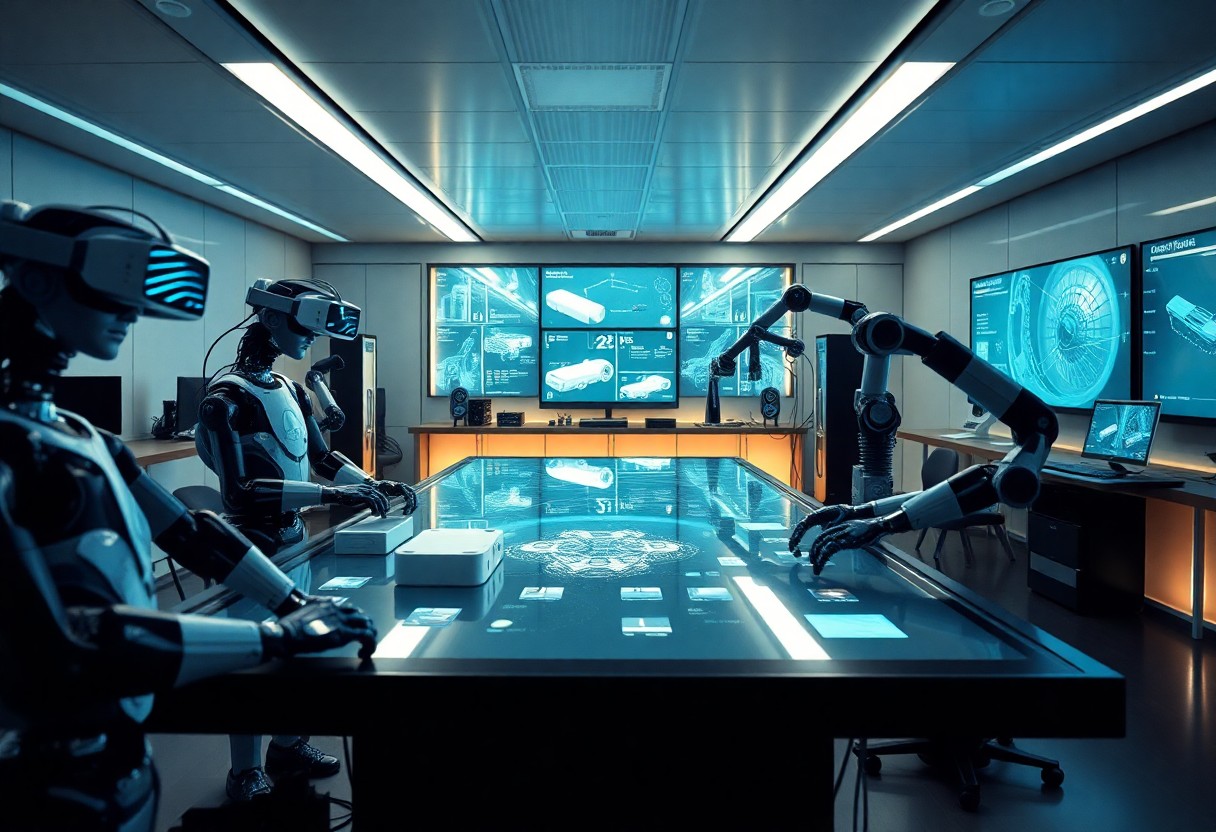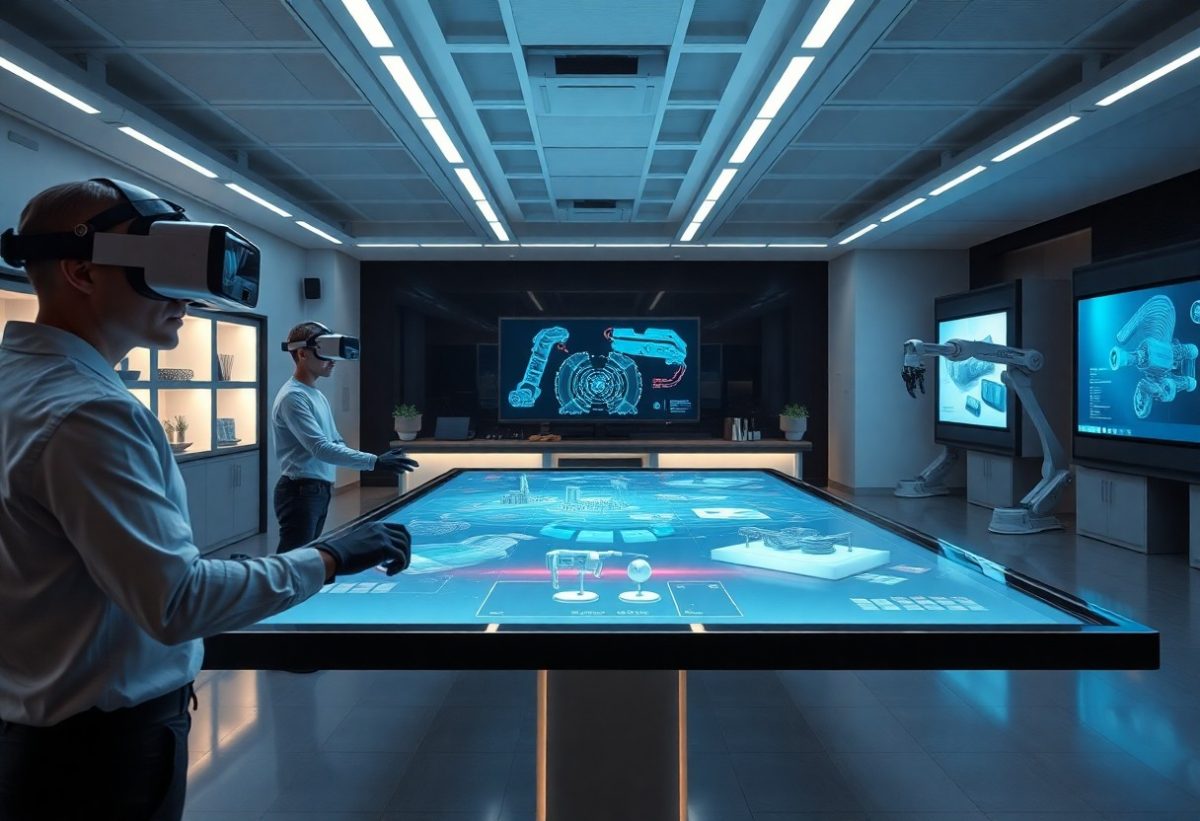Just as technology advances at an unprecedented pace, it reshapes the landscape of digital design in ways you may not yet fully comprehend. In 2024 and beyond, the integration of AI tools is transforming how you create, collaborate, and innovate in your design projects. From automating repetitive tasks to enabling data-driven decisions, AI is not only enhancing your creative capabilities but also redefining industry standards. This blog post explores the profound ways AI technology is impacting your approach to digital design, setting the stage for a new era of visual creativity.
Understanding AI in Digital Design
The Emergence of AI Technologies
AI technologies have rapidly transformed the digital design landscape, enabling designers to automate tedious tasks and harness powerful analytics. Sophisticated algorithms can now generate design elements, optimize layouts, and even suggest color palettes based on user behavior. As tools like Adobe Sensei and DALL-E emerge, you gain access to intelligent features that enhance creativity and efficiency, allowing you to focus more on innovative concepts rather than routine processes.
Historical Context of AI in Design
The journey of AI in design began in the 1960s, marked by pioneering experiments that combined computer science with artistic creativity. Early applications included basic generative art and rudimentary design tools. Over the decades, advancements in machine learning and computational design have led to increasingly complex applications, culminating in today’s AI-powered platforms. These historical milestones set the stage for the current integration of AI in everyday design workflows.
In the 1980s, expert systems emerged, allowing designers to harness rule-based algorithms for decision making. By the 1990s, graphics software began incorporating rudimentary AI functions, improving user interfaces and automating repetitive tasks. The 2000s witnessed the rise of machine learning, where algorithms could learn from data and predict design trends. Fast forward to today, AI not only assists with design but can also create entire visuals independently while enhancing collaboration and personalization in the design process, enriching the creative experience for you.

Key AI Technologies Revolutionizing Design
Machine Learning and Predictive Design
Machine learning is reshaping design through predictive algorithms that analyze user behavior and aesthetic preferences. By processing vast sets of data, these algorithms can suggest design elements that are likely to resonate with your target audience, enhancing user engagement and satisfaction. As you integrate machine learning, you will find that it streamlines your design process, allowing for more informed decisions based on empirical evidence rather than guesswork.
Generative Design and Its Implications
Generative design uses algorithms to create a wide array of design options based on defined parameters. This technology can produce innovative solutions that a human designer might not conceive, pushing the boundaries of creativity. As you embrace generative design, you can explore new aesthetics and functionalities, resulting in designs that are both efficient and unique.
Exploring generative design taps into a vast computational power that can evaluate multiple design alternatives simultaneously. By setting criteria such as materials, cost, and performance, you leverage software to generate outcomes that align closely with your vision. This approach not only enhances creativity but also accelerates the prototyping process, enabling you to iterate designs rapidly while minimizing material waste in a sustainable manner.
Natural Language Processing in Design Tools
Natural Language Processing (NLP) enhances design tools by allowing you to communicate with software using everyday language. This capability simplifies the design process, enabling you to articulate your ideas and receive immediate visual feedback, thus streamlining your workflow and increasing productivity. With the advancement of NLP, complex design commands can be translated into actionable tasks, making tools more accessible to non-experts.
The integration of NLP in design software enables you to issue voice commands or type descriptive phrases that automatically generate design elements. For instance, instructing your design tool to “create a nature-themed landing page” can yield customized layouts and graphical content tailored to that theme. This significant innovation not only democratizes design but also facilitates collaboration among diverse teams, allowing everyone to contribute ideas without needing specialized technical knowledge.
The Impact of AI on Design Workflows
Automation of Routine Tasks
AI dramatically streamlines your design workflow by automating repetitive tasks such as resizing images, organizing files, and generating variations. This not only saves time but also reduces the risk of human error, allowing you to focus on more complex and creative aspects of your projects. With tools designed to learn your preferences, automation becomes personalized, enhancing efficiency without sacrificing quality.
Enhancing Creativity and Ideation
AI-driven tools are transforming ideation by offering endless design possibilities and suggestions tailored to your style. Leveraging vast datasets, these technologies provide inspiration through AI-generated concepts, enabling you to explore innovative approaches that you might not have considered before.
By analyzing current design trends and user preferences, AI tools can generate unique motifs, color palettes, or layouts, sparking creativity and providing fresh ideas. This instant feedback loop means you spend less time brainstorming and more time refining your vision. Moreover, collaboration with AI can lead to unexpected results, pushing your creative boundaries as you integrate its suggestions seamlessly into your design process.
AI Collaboration Tools
Collaboration with AI tools enhances teamwork by providing real-time insights and feedback, ensuring all team members are aligned. You can leverage platforms that enable AI to analyze design proposals or suggest modifications, fostering a more interactive and dynamic design environment.
These AI collaboration tools facilitate seamless communication among designers, marketers, and stakeholders, streamlining the feedback process. For example, AI can synthesize suggestions from various team members and highlight the most effective changes, minimizing conflicts and accelerating decision-making. This not only enhances productivity but also nurtures a culture of innovation in your projects, allowing each team member’s input to be effectively integrated into the final design.
Case Studies: AI in Action
- Case Study 1: Company A utilized AI-generated designs, reducing time spent on initial concepts by 40%, resulting in a 25% increase in client satisfaction.
- Case Study 2: Agency B implemented AI to analyze user behavior, leading to a 30% improvement in conversion rates and a 15% boost in revenue.
- Case Study 3: Design Firm C adopted AI for automated layout generation, cutting production time by 50% and achieving a 35% increase in productivity.
- Case Study 4: Startup D applied AI tools for social media content creation, seeing a 20% rise in engagement and a 50% reduction in content creation costs.
- Case Study 5: Studio E integrated AI-enhanced prototyping, which led to a 60% faster iteration process and a 40% decrease in design errors.
Success Stories from Leading Design Firms
Your exploration into leading design firms reveals transformative results driven by AI. Firm X improved workflow efficiency by 30%, thanks to predictive algorithms that streamlined project timelines. Firm Y saw a doubling of client retention rates by utilizing AI-enhanced personalization in their designs, showcasing the impact of data-driven creativity.
Innovative Startups Leveraging AI
Startups like Company Z harness AI to create unique design solutions, driving engagement through tailored, data-driven strategies. These innovative teams are revolutionizing how design is approached, blending technology with creativity for impactful results.
Innovative startups leverage AI not just for design but also for marketing execution, customer engagement, and analytics. For example, Company Z reduced design time by 70% with AI-driven templates while simultaneously enhancing customer interactions through personalized content. Their ability to analyze market trends in real-time has made them agile competitors, able to adapt designs swiftly based on user feedback.
AI-Powered Platforms and Tools
AI-powered platforms have reshaped how you approach digital design, offering tools that simplify complex tasks. Programs like Tool A and Tool B enable seamless integration of design and user insights, fostering a more dynamic creative process.
Platforms such as Tool A utilize machine learning to suggest design elements based on user preferences, allowing for more tailored outcomes. Additionally, Tool B automates repetitive tasks, freeing up your creative resources for innovative projects. These tools not only enhance productivity but also improve the overall quality of designs by using data to inform creative decisions.

Ethical Considerations in AI Design
Ownership and Copyright Issues
AI-generated designs raise significant questions about ownership and copyright. When an AI creates a piece of artwork or design, it’s unclear whether the original creator, the programmer, or the AI itself holds the copyright. You may find yourself navigating complex legal frameworks that vary by jurisdiction, which can impact your rights and the commercialization of your creations.
The Challenge of Bias in AI Algorithms
Bias in AI algorithms can lead to skewed design outputs that reinforce stereotypes or exclude certain groups. You must be aware that AI systems often learn from historical data, unearthing and perpetuating existing prejudices. This issue requires careful attention to the datasets you use to train your AI tools; otherwise, the results may not reflect the diversity of the user base you’re aiming to serve.
To effectively tackle bias, scrutinizing your training datasets is necessary. If these datasets lack representation or contain biased examples, your AI will mirror those flaws in its outputs. For instance, design algorithms trained predominantly on images of white males may fail to produce appealing outcomes for women or people of different ethnicities. Regularly auditing your AI systems can uncover biases, allowing you to refine datasets and algorithms for more equitable design outcomes.
Ensuring Inclusive Design Practices
Inclusive design practices ensure that the needs of diverse users are met in your digital designs. By incorporating various perspectives and user experiences into the design process, you create products that resonate with a wider audience. This approach not only enhances usability but also fosters brand loyalty and trust.
Implementing inclusive design practices involves actively involving people from different backgrounds in your design process. Conducting user research across demographics can provide insights into how diverse audiences interact with your products. Initiatives such as collaborative workshops, focus groups, and beta testing with varied user profiles can lead to richer, more accessible designs, allowing you to connect with users on a meaningful level.
Future Trends in AI-Driven Design
Predictions for Design in 2025 and Beyond
By 2025, AI is expected to offer hyper-personalized design experiences, tailoring visual content directly to individual preferences and behaviors. This will transform how users engage with digital interfaces, blurring the lines between user experience and automated design, leading to unique, dynamic layouts that evolve in real time.
The Role of Human Designers in an AI World
In a landscape increasingly dominated by AI, your role as a designer will shift from execution to strategy. You will need to guide AI tools, infusing human creativity and emotion—elements machines cannot replicate. Collaboration between AI and human insight will foster innovation, ensuring that user-centered design is prioritized.
As a designer, leveraging AI’s efficiency will free you from mundane tasks, allowing you to focus on the creative and conceptual aspects of design. This partnership demands that you interpret AI-generated outputs critically, ensuring they align with brand values and resonate with target audiences, blending technical proficiency with artistic vision.
Developing New Skills for Future Designers
You will need to cultivate a diverse skill set that merges traditional design principles with technological fluency in AI tools. Understanding algorithms, data analytics, and the psychology of user interaction will become imperative, enabling you to create designs that are both innovative and effective.
Investing in education around AI and machine learning will empower you to harness these technologies effectively. Workshops and online courses can provide insight into how AI algorithms function, giving you the ability to manipulate these tools to meet your design goals. Expanding your skill set in this way not only enhances your competitiveness but also positions you as a pivotal figure in the digital design landscape.
Summing up
As a reminder, the visual revolution driven by AI technology is reshaping digital design in 2024 and beyond. You have the opportunity to harness these advanced tools to enhance your creative process, allowing for greater efficiency and innovation. By embracing AI, you can elevate your design capabilities, resulting in more personalized and engaging user experiences. As you navigate this transformative landscape, staying informed and adapting to these changes will empower you to maximize your potential and redefine your design approach.

